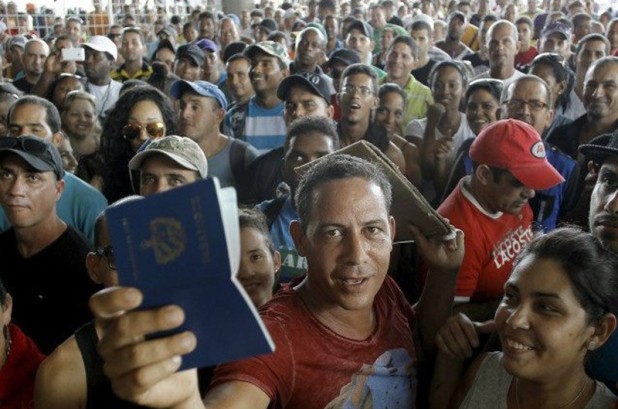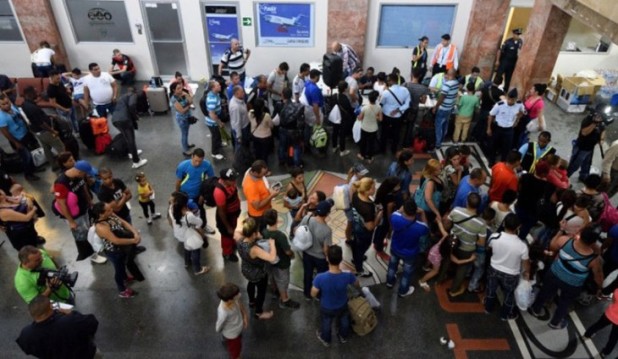The New Observer
May 13, 2016
Four thousand invaders claiming to be Cubans have gained automatic entry into the US after crossing the border from Mexico into Texas, the Customs and Border Protection (CBP) has announced.
In a process shorter than it takes American nationals to get a driver’s license, the “Cubans” have been granted entry in terms of the US’s “wet foot, dry foot” policy.
That policy, a 1995 revision of the Cuban Adjustment Act of 1966, regards anyone who claims asylum from Cuba as a legitimate “refugee”—no matter what their actual status—as long as they can set foot on US soil.
It was earlier reported that around 50,000 Cubans had poured into Central America to make the trek up to the US via the illegal alien border crossing invasion route, in anticipation that Washington might halt the automatic asylum policy.
According to a report by the Center for Immigration Studies (CIS), the Border Patrol has reported that “is prepared to process the expected increase in Cubans applying for admission at El Paso area ports of entry.”
The El Paso Field Office described how the CBP processing system for “Cubans” works:
Cuban citizens present themselves for admission at a port of entry. They provide proof of their Cuban citizenship, such as a passport or birth certificate.
Once citizenship is established, CBP officers ask if they are members of the Cuban regime or work for the Cuban government, among other questions.
CBP officers next take fingerprint scans and check against CBP’s national law enforcement databases. If no derogatory information is returned, the process continues.
At the conclusion of the interview process, if no derogatory information is returned—such as criminal or existing US immigration history or otherwise disqualifying factors like membership in Castro regime or use of fraudulent documents—the person is processed for release into the US.
The CBP officer issues the traveler an I-94 parole document with the Cuban’s temporary alien number written on the back.
This parole document is valid for two years. One year after inspection and admission to the US, Cubans can apply to receive permanent US residency—a green card.
The entire process takes approximately one hour per person.
Ironically, the “Cubans” are being airlifted from countries such as Panama to Ciudad Juarez, the Mexican city opposite El Paso.
Earlier this year, Panama transferred about 1,300 Cubans to the US-Mexico border, after Nicaragua and then Costa Rica closed their borders to Cuban migrants without visas passing through on their way north.
However, after the airlift was complete, Cuban illegal aliens continued to arrive at the Panama-Costa Rica border.
Cubans wait this week at Panama City’s airport for flights to Mexico.
According to a press release by the Panamanian government, the latest airlift is being carried out “with the support of the Government of the United Mexican States, as an exceptional, limited solution and, for the last time, to ensure smooth, orderly, and safe transit of such migrants, with observance of respect for their human rights.”
A joint press release by the Mexican Ministries of Interior and Foreign Affairs stated that, “Mexico has decided to continue with the exceptional support provided in previous weeks.”
The government of Panama also announced that it has temporarily closed its border with Colombia in order to reduce the flow of “irregular migration” that affects the region.
Panamanian President Juan Carlos Varela said, “We have taken the difficult decision to close the border with Colombia to confront the passage of irregular migrants. We have to close the border to this irregular flow.”
He added, “We will not allow the presence of people without immigration status.”
In addition to the thousands of Cubans, hundreds of US-bound African invaders have also been stranded at the Panama-Costa Rica border. The Costa Rican authorities have reported the presence of people of 14 different nationalities at that border, including Haitians and Brazilians.
 Daily Stormer The Most Censored Publication in History
Daily Stormer The Most Censored Publication in History




